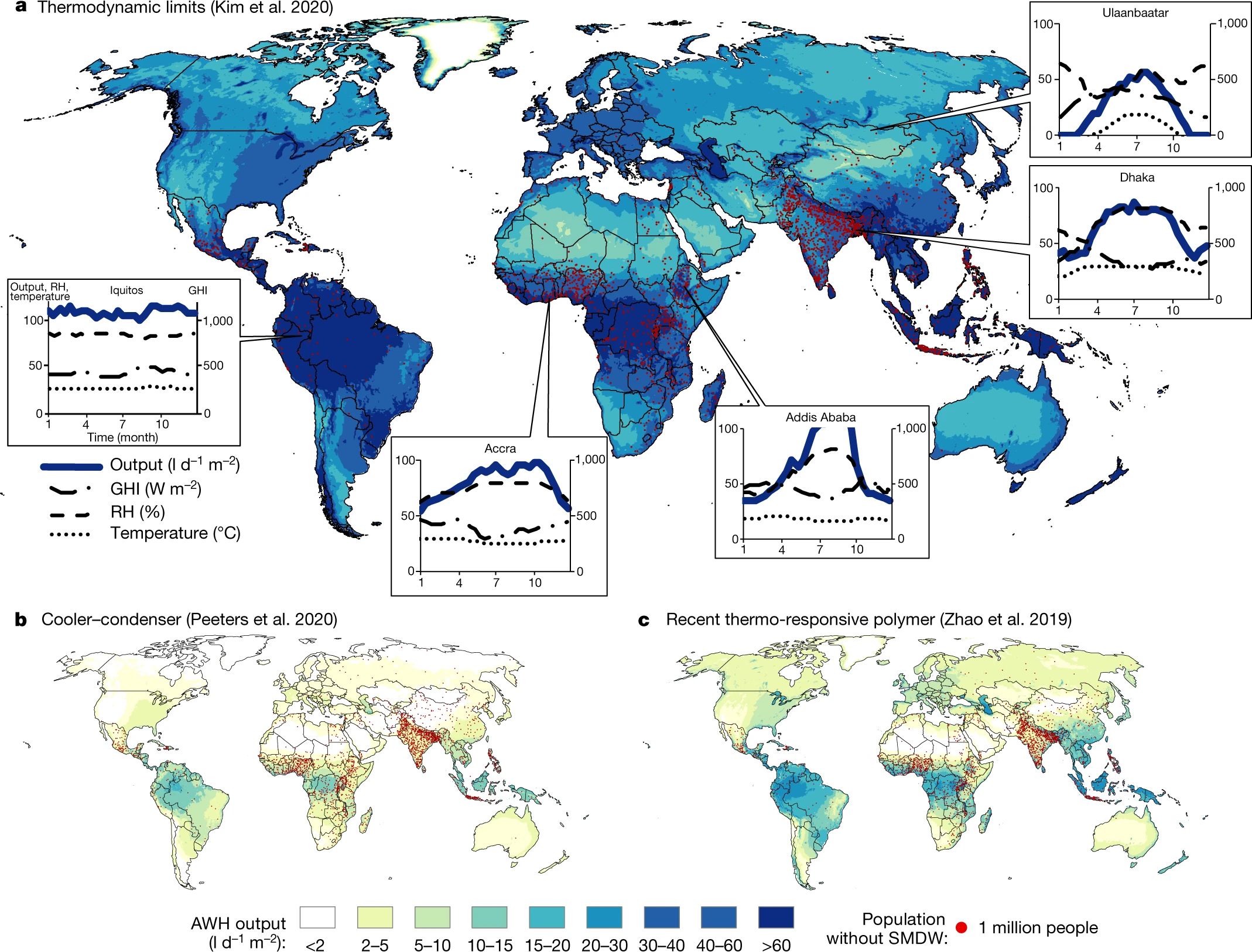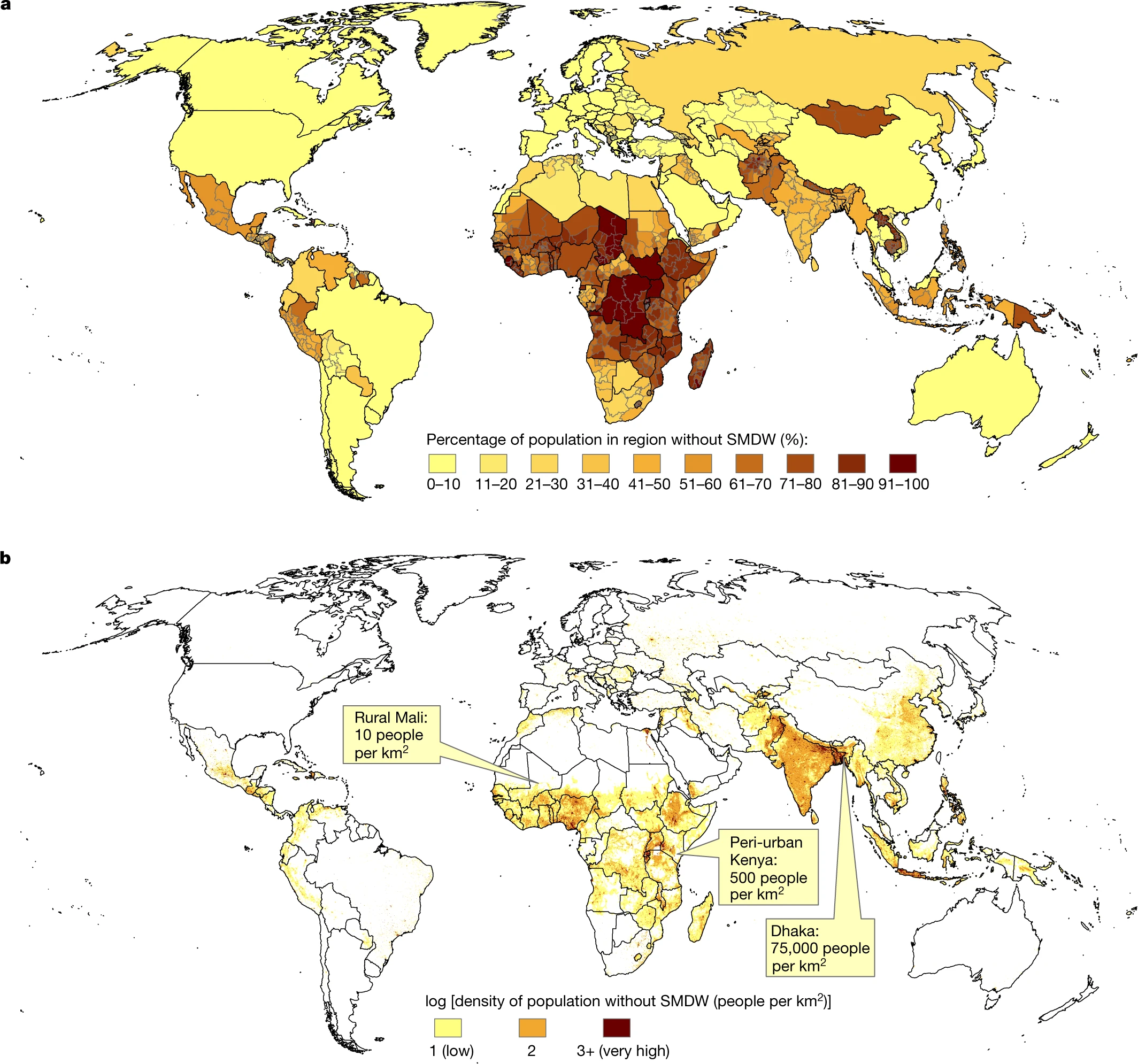At least a billion people could solve their water legal problems thanks to a technology that works with solar energy :

This is the conclusion of a team of US researchers led by Jackson Lord at Company X , The Moonshot Factory , who have developed a new tool to assess the global potential of water harvesting . The new device could easily help researchers obtain fully off-grid water sources suitable for use by local communities in many parts of the developing world. These are atmospheric water collectors (AWH) , which extract clean liquid water from humid air:
There are several types of AWH, and Lord and colleagues have focused on AWH in continuous solar-powered mode (SC-AWH). This tool harnesses the heat of sunlight by locating warm, humid air through a heat exchanger that cools and releases water by condensation. Since SC-AWH works during the day , when relative humidity tends to be low, its efficiency is poor and it is not clear where in the world it is suitable for use. Now, Lord’s team has created a geospatial tool called ” AWH-Geo ” to assess the global potential for water harvesting:

Based on a Google Earth engine , the instrument uses ERA5 data : it is a database containing data from a series of historical climate observations dating back to 1979 . To evaluate the different results of atmospheric water absorption in different regions, AWH-Geo took into account the irradiation of sunlight , relative humidity and average air temperature of each location. Furthermore, the tool took into account the annual variations of these parameters. The team also looked at the global distribution of people without access to safe water, using data from the World Health Organization and UNICEF:
Combining this with the results from AWH-Geo, the researchers showed that atmospheric water harvesting could realistically provide five liters of drinking water to around one billion people around the world . This calculation is based on the use of a hypothetical SC-AWH with a catchment area of 1 m2. The team calculates that such a device could produce between 0.2 and 2.5 liters of water per kilowatt hour of primary solar energy when operating at a relative humidity of between 30% and 90% and an average air temperature of 20 ° C .:
Researchers are developing such a device and, with technological improvements, believe it could provide cost-effective, completely off-grid access to high-quality drinking water for many communities in developing countries. Researchers will continue to use AWH-Geo to lead the development of new types of water harvesting devices, with the ultimate goal of moving closer to the United Nations goal of ensuring clean water for approximately 2.2 billion people, allowing them to stay on their land rather than being forced to flee.
More information: www.nature.com (English text).











